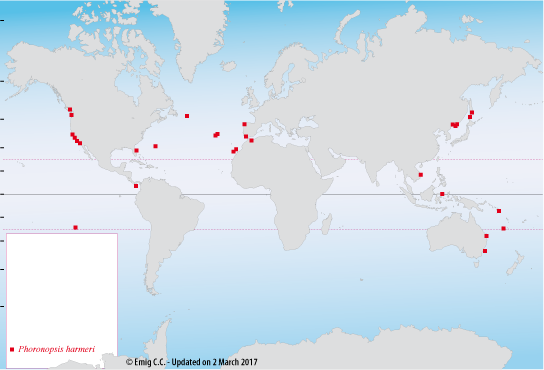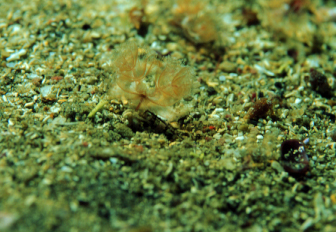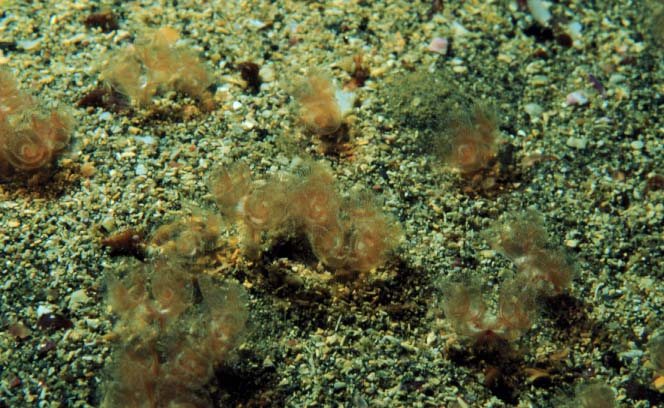|
Phoronopsis harmeri Pixell, 1912 Larva: Actinotrocha harmeri Zimmer, 1964 |
|
| Synonyms: Phoronis pacifica Torrey, 1901 Phoronopsis striata Hilton, 1930 Phoronopsis viridis Hilton, 1930
? Phoronopsis malakhovi Temereva, 2000 | |
 ° References of the most recent published diagnoses Pictures of Phoronopsis harmeri
| ||||||
| Diagnosis | ||||||
|
Last update: July 5, 2007 Collar-fold below the lophophore (genus character): well-marked around the lophophore.
Extended specimens up to 220 mm long, diameter 0.6-4 mm.
Sexual reproduction dioecious; females shed the ova directly in the sea-water; males with large membranous lophophoral organs. Asexual reproduction by transverse fission. Phoronopsis harmeri is embedded vertically in soft sediments from sands to muddy sand, sometimes with a coarse fraction; depths range from the intertidal zone to 102 m, with a common range from 0-20 m. Densities may reach 28,000 ind.m-2.
Phoronis harmeri is a rather cosmopolitan species: the distribution is represented below on the map. Type-locality: Departure Bay, Vancouver Island (Canada) Last update: March 2, 2017  |

|
Handbook of alien species in Europe (2009) : Comments on the so-called alien phoronid. Santagata S. & B. L. Cohen, 2009. Phoronid phylogenetics (Brachiopoda; Phoronata): evidence from morphological cladistics, small and large subunit rDNA sequences, and mitochondrial cox1. Zoological Journal of the Linnean Society, 157, 34-50. |

Dr. Peter Wirtz, PO Box 103, P - 9125 Canico, Madeira (Portugal)...
see also his books and photos



